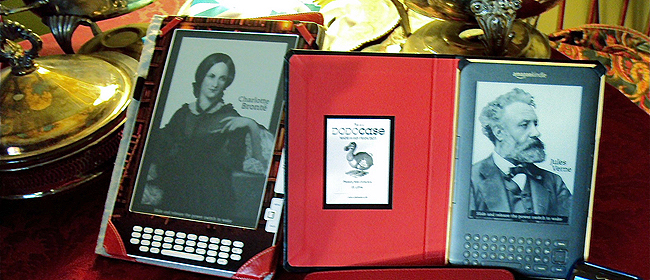More than a year into the process of building the DPLA, it’s always nice to be reassured that there’s a growing need for such a library. A recent study on e-reading by Pew Internet examines just the sort of readership to which the DPLA will cater, and the results are promising for the library: more people are reading online, and in increasingly broad and engaged fashion.
Key findings of the detailed report’s survey of 2,986 Americans aged 16 and up include:
- 1/5 of American adults have read an e-book in the past year. This number jumped from 17% before the holidays to 21% after the season.
- 88% of e-book readers also read printed books, and for a diverse set of reasons including pleasure, research, and current events. Interestingly for the purposes of digital libraries, 54% of print readers and 61% of e-book readers prefer to purchase rather than borrow books. When asked about the most recent book they had read, only 14% reported borrowing it from a library.
- E-book readers also read more books more often than the average American reader. The most avid readers seem to be e-book reading device owners as opposed to tablet owners, who do not read substantially more than their tabletless counterparts.
- Both tablet and reading device owners report reading more than they did before owning their device. E-book readers also use smartphones as reading devices.
- As has often been hypothesized, readers prefer e-books to printed books for efficiency and portability, but still prefer print for reading to and sharing with others. 53% of those surveyed who had read both e-books and printed books in the past year said that the e-book format offered a wider selection than was available to them in print.
- The most significant portion of e-content readers (50%) said that the content they want was available “most of the time,” with 17% saying it was available “only sometimes,” and 4% stating it was “never available.”
The study provides an in-depth and compelling portrait of e-book readers. It will be interesting to see how these numbers shift in the coming year, but the landscape looks ripe for a project like the DPLA.
Photo via The Daring Librarian on Flickr
